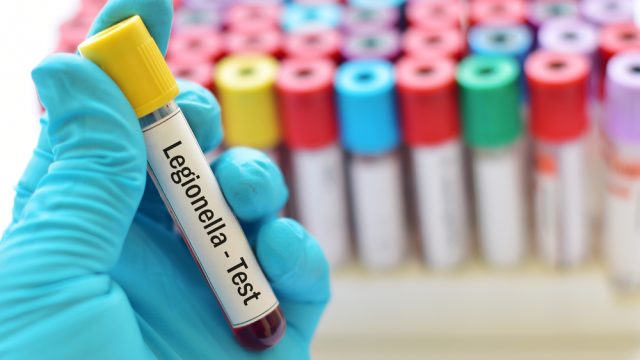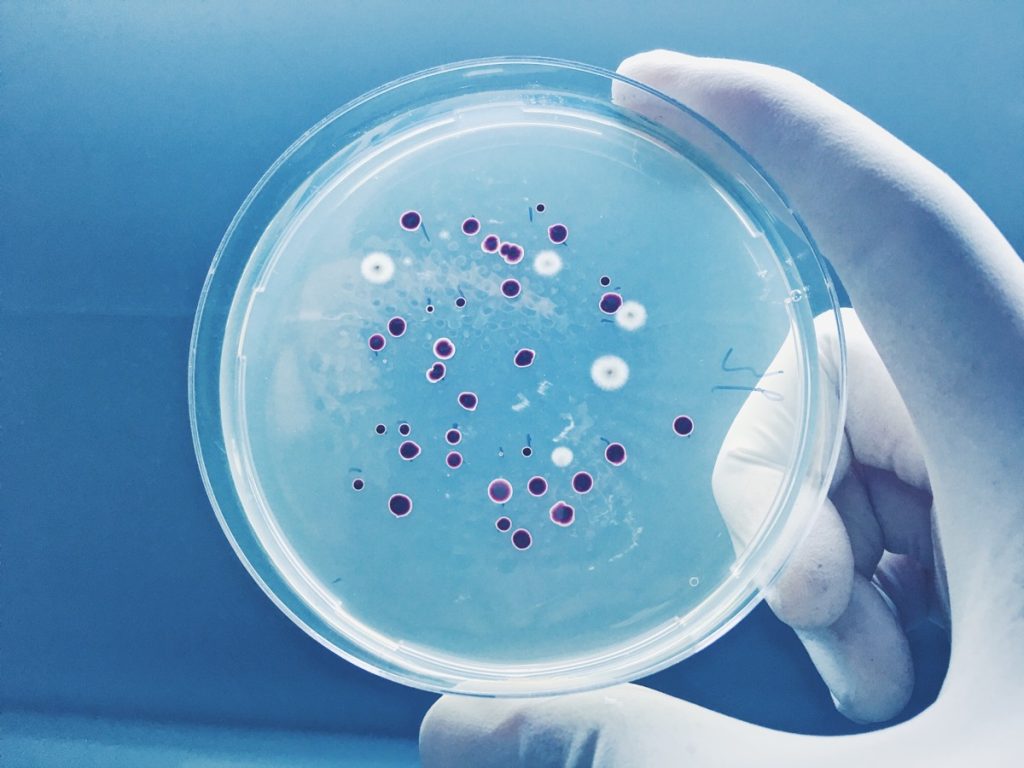Legionnaires' Disease Is Spiking Across U.S.—These Are the Symptoms
Case counts of the bacterial infection jumped nearly tenfold in under two decades.

It's not uncommon for highly contagious diseases such as norovirus, COVID-19, and the flu to surge from time to time. But occasionally, lesser-known illnesses can also bubble up, including everything from fungal infections to a reappearance of mostly eradicated viruses such as measles. Now, new data shows that Legionnaires' disease is spreading in the U.S. at higher levels than ever before. Read on to see what symptoms it can cause and why it's suddenly becoming more common.
RELATED: 7 Symptoms That Are Usually COVID, Not Allergies, Doctors Say.
Legionnaires' disease is spread by breathing in water droplets from a contaminated source.

It may not be a household name yet, but Legionnaires' disease is still becoming more common than it once was. According to the Centers for Disease Control and Prevention (CDC), it's caused by Legionella bacteria, which can be found in freshwater environments in nature. However, the microorganism becomes problematic when it grows in water systems built for human use, including showerheads and sink faucets, cooling towers used in central air cooling systems, hot tubs, decorative fountains, water features, and hot water tanks and heaters.
The bacteria can cause infection when someone breathes in contaminated water droplets. It can also occur when someone drinking water contaminated with Legionella accidentally aspirates some of the liquid into their lungs, per the CDC. Generally speaking, the disease can't spread from person to person.
Once in the lungs, the bacteria can cause an infection known as legionellosis. This includes Legionnaires' disease—a type of pneumonia—and a milder form of the infection known as Pontiac fever.
RELATED: Listeria Outbreak Has Hit 11 States—These Are the Warning Signs of Listeriosis.
Data shows there's been a rise in infections in recent decades.

Legionnaires' disease takes its name from its first identified cases in 1976 when attendees of an American Legion convention developed a severe form of pneumonia, according to the CDC. But while cases remained relatively rare in the years after it was found, there's been a surge over the past two decades.
Data from the CDC shows that roughly 1,000 cases of Legionnaires' disease were reported in 2000. But by 2018, the annual number had skyrocketed to about 10,000. The agency also estimates that cases are underreported due to misdiagnoses, with one study suggesting case numbers potentially as much as 1.8 to 2.7 times higher.
There have also been several recent incidents of reported cases. In one instance, health officials kicked off an investigation after two patients appeared to contract Legionnaires' disease after staying at a hotel near Newark Liberty International Airport last summer, CBS News reports. And a staff member at a nursing home in Cincinnati was also confirmed to have been infected earlier this month, local Fox affiliate WXIX reports.
But the largest outbreak cluster appears to have taken place in Grand Rapids, Minnesota, where 15 people contracted Legionnaires' disease since the beginning of 2023, Minnesota Public Radio reports. The city is now considering chlorinating its water supply amid an ongoing investigation.
RELATED: Officials Issue Alert Amid "Incredibly Contagious" Mumps Outbreak—These Are the Symptoms.
New research suggests that there might be a surprising reason for the spike.

While the CDC suggests that the rise in cases might partly be due to better screening for the disease, new research could suggest another surprising cause. A recent study conducted at the State University of New York at Albany found that a drop in air pollution—or specifically the amount of sulfur dioxide (SO2) present worldwide—coincided with the jump in Legionnaires' disease cases.
"Airborne water droplets carrying Legionella bacteria uptake SO2 from the ambient air, which can make the water droplet acidic and inhospitable for the bacteria when SO2 levels are high," the authors wrote in their media release. "As SO2 pollution declined nationally, the bacteria lived longer in airborne droplets, increasing the chances that viable bacteria could end up in a person's lungs."
These are the symptoms of Legionnaires' disease you should know.

The study's authors conclude that despite the increase in cases, lower air pollution has many clear benefits. However, they said that increased awareness about the disease is becoming more critical in light of the changes.
According to the CDC, there are several symptoms of Legionnaires' disease to keep an eye out for. Similar to other types of pneumonia, they include a cough, shortness of breath, fever, muscle aches, and headaches. In some instances, patients can also experience diarrhea, nausea, and confusion.
The agency urges anyone who develops these symptoms to seek medical attention immediately, especially if they've recently used a hot tub, spent a night away from home, or stayed in a hospital within the previous two weeks.
Legionnaires' disease can be quite serious, with one in 10 people who contract it dying from the disease and one in four people who contract it during a hospital stay passing away. It's also especially dangerous for those who are 50 or older, are current or former smokers, have chronic lung disease, or are immunocompromised.
Best Life offers the most up-to-date information from top experts, new research, and health agencies, but our content is not meant to be a substitute for professional guidance. When it comes to the medication you're taking or any other health questions you have, always consult your healthcare provider directly.





















